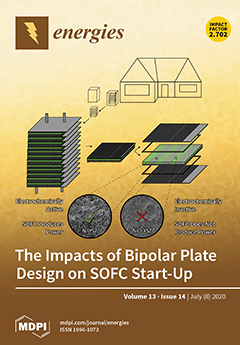This work concerns borehole heat exchangers and their testing using apparatus for thermal response tests. In the theoretical part of the article, an equation was derived from the known equation of heat flow, on which the interpretation of the thermal response test was based. The practical part presents the results of several measurements taken in the AGH Laboratory of Geoenergetics. They were aimed at examining the potential heat exchange capacity between the heat carrier and rock mass. Measurement results in the form of graphs are shown in relation to the examined, briefly described wells. Result analysis made it possible to draw conclusions regarding the interpretation of the thermal response test. The method of averaging the measurement results was subjected to further study. The measuring apparatus recorded data at a frequency of one second, however such accuracy was too large to be analyzed efficiently. Therefore, an average of every 1 min, every 10 min, and every 60 min was proposed. The conclusions stemming from the differences in the values of effective thermal conductivity in the borehole heat exchanger, resulting from different data averaging, were described. In the case of three borehole heat exchangers, ground properties were identical. The effective thermal conductivity
λeff was shown to depend on various borehole heat exchanger (BHE) designs, heat carrier flow geometry, and grout parameters. It is important to consider the position of the pipes relative to each other. As shown in the charts, the best (the highest) effective thermal conductivity
λeff occurred in BHE-1 with a coaxial construction. At the same time, this value was closest to the theoretical value of thermal conductivity of rocks
λ, determined on the basis of literature. The standard deviation and the coefficient of variation confirmed that the effective thermal conductivity
λeff, calculated for different time intervals, showed little variation in value. The values of effective thermal conductivity
λeff for each time interval for the same borehole exchanger were similar in value. The lowest values of effective thermal conductivity
λeff most often appeared for analysis with averaging every 60 min, and the highest—for analysis with averaging every 1 min. For safety reasons, when designing (number of BHEs), safer values should be taken for analysis, i.e., lower, averaging every 60 min.
Full article





